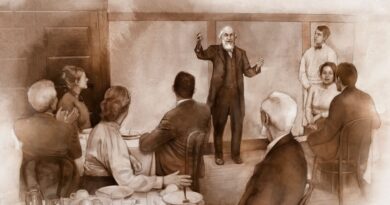Despovoamento completo de Israel por 70 anos?
Análise da citação de Ephraim Stern na revista Despertai! de junho de 2012
Introdução
A liderança das Testemunhas de Jeová (JW.ORG) baseia sua autoridade na posição de que, depois que o governo do Reino de Deus restaurou seu foco na Terra em 1914, esse governo restabelecido selecionou a organização deles em 1919 para ser seu representante exclusivo na Terra.
Se houve um restabelecimento do governo do Reino de Deus, então deve ter havido um período em que suas atividades na Terra foram suspensas. A JW.org afirma que esse período começou quando o grupo de judeus que havia assassinado o governador Gedalias entrou no Egito. Naquele momento, diz a JW.org, a terra de Judá ficou completamente despovoada. Essa ausência absoluta de pessoas supostamente continuou por 70 anos até que os primeiros retornados se reuniram no local do templo em ruínas em Jerusalém em 537 A.C. (uma data que a organização é incapaz de estabelecer historicamente).
A citação de Ephraim Stern
A revista Despertai! de junho de 2012, pág. 14 cita o renomado arqueólogo Ephraim Stern em apoio dessa interpretação:
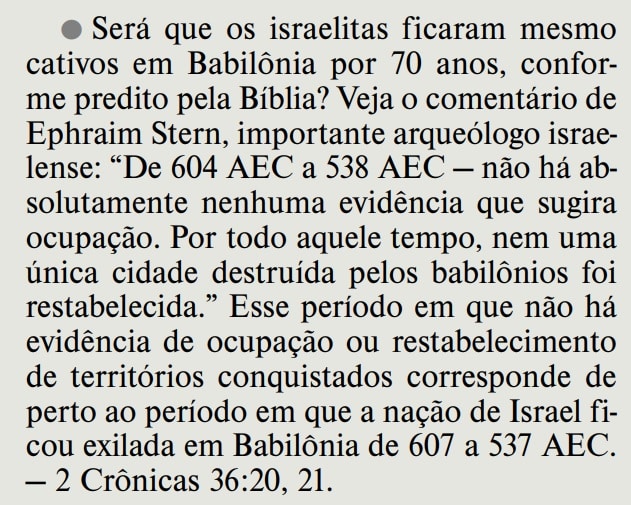
O autor desse artigo da Despertai! não identificou a fonte dessa citação, o que torna impossível que o leitor determine o contexto e o que mais Ephraim Stern disse. Esse trecho citado aparece em The Babylonian Gap, Biblical Archaeology Review, 26:6, novembro/dezembro de 2000 (Os nossos leitores que conhecem inglês poderão ler esta matéria no Apêndice 1).
Nesse artigo, Stern contrasta o impacto dos assírios sobre as nações que eles conquistaram com o impacto dos babilônios. Embora ambos tenham sido igualmente cruéis, cada um deixou um legado completamente diferente:
Os períodos que se seguiram às suas conquistas não poderiam ser menos parecidos. Enquanto os assírios deixaram uma marca clara de sua presença na Palestina, há uma estranha lacuna após a destruição babilônica. Chame isso de de lacuna arqueológica, se quiser.
Essa é que é, então, a “lacuna” a que Stern se refere: uma lacuna no registro arqueológico.
Por “604 AEC” no trecho que segue, Stern quer dizer o primeiro ano de Nabucodonosor:
Sobre os restos deixados por essas destruições, não encontramos qualquer evidência de ocupação até o período persa, que começou por volta de 538 AEC. Por aproximadamente meio século – de 604 A.E.C. a 538 A.E.C. – não há absolutamente nenhuma evidência que sugira ocupação. Por todo aquele tempo, nem uma única cidade destruída pelos babilônios foi restabelecida…
Do período entre 604 e 538 AEC, por exemplo, nem um único documento relacionado à administração imperial babilônica da Palestina foi encontrado. Os vestígios babilônicos consistem apenas em algumas dezenas de selos e impressões de selos neobabilônicos, alguns dos quais são importados e outros são imitações fabricadas localmente.
Para garantir que ninguém tirasse a conclusão de que não havia gente morando naquela terra, Stern escreveu:
Não quero dizer que o país estava desabitado durante o período entre a destruição babilônica e o período persa. Sem dúvida, havia alguns assentamentos, mas a população era muito pequena. Muitas cidades e vilarejos foram total ou parcialmente destruídos. As demais mal funcionavam. O comércio internacional praticamente cessou. Apenas duas regiões parecem ter sido poupadas desse destino a parte norte de Judá (a região de Benjamim) e provavelmente a terra de Amon, embora essa última região esteja aguardando investigação.
Stern detalha suas descobertas em seu livro, Archaeology of the Land of the Bible, Volume II: The Assyrian, Babylonian, and Persian Periods (732 – 332 BCE) [Arqueologia da Terra de Bíblia, Volume II: Os Períodos Assírio, Babilônico e Persa (732-332 AEC)]. O Apêndice 2 contém uma reprodução de umas 20 páginas desta obra, contendo trechos pertinentes à discussão deste artigo.
O significado correto das frases de Stern que foram citadas na revista Despertai!
“De 604 A.E.C. a 538 A.E.C.”
Efraim Stern começa o período com 604 A.E.C. porque ele diz que foi quando o reinado de Nabucodonosor começou e ele assumiu o controle de territórios que incluíam Judá. Esse ano de 604 A.E.C. marcou o início da dominação babilônica da região, quando Nabucodonosor instalou Jeoiaquim como rei de Judá. Stern encerra o período de dominação babilônica com sua derrota para a Pérsia em 539 A.E.C. e o estabelecimento do Império Persa quando Ciro subiu ao trono babilônico no início do ano seguinte. Portanto, a expressão “de 604 A.E.C. a 538 A.E.C.” significa, “do primeiro ano de Nabucodonosor ao primeiro ano de Ciro“.
“não há absolutamente nenhuma evidência que sugira ocupação”
Tendo em vista as datas mencionadas, Stern está dizendo que essa ausência na evidência arqueológica incluía o tempo em que os reis ainda estavam governando em Jerusalém. Embora Stern relate a ausência de evidências arqueológicas durante esse período, ele deixa bem claro que pessoas permaneciam naquela terra.
“nem uma única cidade destruída pelos babilônios foi restabelecida.”
Stern afirma que, ao contrário dos assírios, os babilônios não reconstruíram as cidades que destruíram. Mas os babilônios não destruíram todas as cidades. Ele também não quis dizer que não havia pessoas vivendo nessas cidades destruídas, ou perto delas. Stern deixa bem claro que pessoas permaneceram na terra durante esse período de dominação babilônica.
Stern registra com bastante ênfase a completa devastação de Jerusalém (datando-a consistentemente em 586 A.E.C.) e também das cidades ao sul e ao leste. Porém, ele deixa bem claro que a região de Benjamim, ao norte de Judá, não sofreu devastação; na verdade, Benjamim prosperou durante esse período. Os babilônios estabeleceram a sede do governo local em Mispá, em Benjamim, governo este que continuou a ser exercido até muito depois de os judeus retornarem do exílio.
Conclusão
O arqueólogo Stern foi citado de maneira muito tendenciosa na revista Despertai! Ele foi usado para “apoiar” a ideia defendida pela JW.ORG de uma devastação completa, ‘sem restar um único habitante’; ou seja, que não houve ocupação ou restabelecimento populacional no território de Israel durante o exílio babilônico. Na realidade, Ephraim Stern afirmou o contrário disso.
Apêndice 1
THE BABYLONIAN GAP
Biblical Archaeology Review, 26:6, novembro/dezembro de 2000
EPHRAIM STERN
The Assyrians impressed their culture on Israel … the Babylonians left no trace
The Assyrians and Babylonians both ravaged large parts of ancient Israel, yet the archaeological evidence from the aftermath of their respective conquests tells two very different stories. Why? In 721 B.C.E., the Assyrians brought an end to the northern kingdom of Israel. A little more than a century later, the Assyrians themselves suffered defeat at the hands of the Babylonians, who became the world‘s new superpower. The Babylonians were no less bent on mayhem and destruction than the Assyrians had been: In 586 B.C.E., they burnt Jerusalem and destroyed the Temple, bringing an end to the southern kingdom of Judah and 400 years of Davidic rule.
As destroyers, the Assyrians and Babylonians had much in common. But the periods that followed their conquests could not be less alike. While the Assyrians left a clear imprint of their presence in Palestine, there is a strange gap after the Babylonian destruction. Call it an archaeological gap, if you wish.
The savage Babylonian destruction of Jerusalem is well documented both in the Bible (in the books of Jeremiah and Lamentations) and in the archaeological record. When Nebuchadnezzar first placed the city under siege in 597 B.C.E., the city quickly capitulated, thereby avoiding a general destruction. But in response to a revolt by Judah’s King Zedekiah, Nebuchadnezzar dispatched an army that, after an 18-month siege, captured and destroyed the city in 586 B.C.E. The evidence of this destruction is widely confirmed in Jerusalem excavations. [a]
On his first swing through Judah, Nebuchadnezzar had destroyed much of Philistia—Ekron, Tel Batash, Tell Jemmeh, Ruqeish and Tel Sera’. Particularly devastated was Ashkelon, which the Babylonians sacked in 604 B.C.E. [b]
Similar evidence of Babylonian destruction can be found throughout the Beersheba Valley, in the Aravah (the valley south of the Dead Sea) and in the Jordan River valley. From south to north, we can trace the effects of Babylonian might—at Tell el-Kheleifeh on the coast of the Red Sea, at Ein Gedi on the shore of the Dead Sea, and further north at Dan, the source of the Jordan River. The same is true in excavations at major northern sites—Hazor; Megiddo, overlooking the Jezreel Valley; and Dor, on the Mediterranean coast—and in central Judah, where, in addition to Jerusalem, we may look at Ramat Rahel and Lachish, among other sites.
But the strange thing is that above the remains left by these destructions, we find no evidence of occupation until the Persian period, which began in about 538 B.C.E. For roughly half a century— from 604 B.C.E. to 538 B.C.E.—there is a complete gap in evidence suggesting occupation. In all that time, not a single town destroyed by the Babylonians was resettled.1 This is true even of the old Assyrian fortresses along the Way of the Sea (the Via Maris); they were reoccupied only in the Persian period, as shown by the recently excavated fort at Rishon le-Zion.2 The only indications of a Babylonian presence in Palestine are the massive destruction levels the Babylonians left behind. These are indeed impressive, but there is nothing above them that can be attributed to the Babylonian period.
The Babylonian destruction of the major harbor towns along the Palestinian coast also ended the previously intensive import of Greek ceramics into the country. As scholar Saul Weinberg has lamented, “We are left with a gap of almost a century for which we have so little imported Greek pottery that it is of no help just when it is most needed.” 3
The Babylonian period is characterized by other notable absences as well. From the period between 604 and 538 B.C.E., for example, not a single document connected with the imperial Babylonian administration of Palestine has been found. The Babylonian remains consist only of a few dozen Neo- Babylonian seals and seal impressions, some of which are imports and some of which are locally manufactured imitations. But even a superficial examination of the stratigraphic contexts of these objects shows that some date to the late seventh and very early sixth centuries B.C.E. (essentially before the Babylonian destruction), while the majority date to the Persian period. Very few can be safely attributed to the Babylonian period itself. 4
Archaeologists have recovered three Babylonian cuneiform tablets in Palestine. Two of these tablets—one from Mikhmoret on the Sharon coast and the other from Buseireh in Edom—might have provided evidence for the renewal of international trade along two major highways, but they are dated to the Persian period rather than the Babylonian period.5 Only the third tablet, a dedicatory inscription from Tell en-Nasbeh in Benjamin, may perhaps belong to the Babylonian period, but even it comes from a doubtful context. Other evidence of international trade is entirely lacking.
True, a huge inscribed Babylonian rock relief has recently been traced above the Edomite city of Sela, which lies east of the Jordan on the Kings’ Highway (the ancient route leading from Mesopotamia to Arabia, Palestine and Egypt). But the text is a memorial inscription attributed to the last Babylonian monarch, Nabunaid. Inscribed during one of his campaigns in this area, it has nothing to do with the Babylonian administration of the country.6
Now let us compare this with the situation after the Assyrian conquest. The Assyrian period lasted 75 years—from about 715 B.C.E., when Samaria was occupied in the north, to 640 B.C.E., when the Assyrians retreated from their estates in Palestine. This is only slightly longer than the Babylonian period, which lasted about 65 years.
After their conquest, the Assyrians established several provinces in Palestine. Four stone memorial stelae erected by Assyrian kings have been recovered at Samaria, Ashdod (see photo, below), Ben- Shemen and Kakun,7 and Assyrian administrative tablets in cuneiform have been found at Sepphoris, Tell Keisan, Samaria, Gezer and Hadid. In addition, archaeologists can study the Lamashtu tabletc that was discovered in the vicinity of Lachish.8 Excavations have uncovered Assyrian structures at Ayeleth ha-Shahar, Gezer, Tell Jemmeh, Tel Sera’, Tel Haror and elsewhere, and we have already mentioned the line of fortresses that the Assyrians established along the Via Maris. Palestine also witnessed the construction of Assyrian-style gates and fortifications, even as the local four-room house was replaced by the Mesopotamian open-court house (see photo and plan).9 The Assyrians also influenced the region’s burial customs, as demonstrated by the clay coffins found at sites in all the territories of northern Israel under direct Assyrian control. These sites include Dor, Megiddo, Tell el- Qitaf, Dothan, Samaria, Tell el-Far‘ah (north) and, recently, Jezreel.10
Assyrian palace ware and its local imitations are common features of excavations in northern Israel, as are Assyrian reliefs, stone vessels,11 metal artifacts and imported seals, some of them inscribed with official titles. Moreover, glyptic art in Palestine, which had previously been based on Phoenician- Israelite archetypes, appears to have been revolutionized by Assyrian glyptic styles.12
In short, the archaeological record points to an enormous difference between the period following the Babylonian conquest and the period following the Assyrian conquest. But how can we account for this difference? Clearly it is not a result of chance. On the contrary, the difference is attributable to a difference in the policies of the two empires. While the Assyrians at first adopted a policy of destruction and deportation, this policy was soon almost entirely reversed. The Assyrians rebuilt almost every destroyed town, sending in large numbers of new people from other lands, on a scale seldom seen in the long history of Palestine. Indeed, this is a phenomenon still awaiting proper study. The rebuilding of Megiddo, Dor, Dothan and many other towns completely changed the character of the desolated country.
The Babylonians, by contrast, did nothing to reverse the damage inflicted during their initial phase of domination, when, in addition to destroying, burning and looting all the settlements they occupied, they also systematically deported those inhabitants of the region whom they did not kill. Unlike their Assyrian counterparts, the Babylonian authorities never built anything. Moreover, their destruction of the country’s major harbor towns along the Mediterranean coast ruined international trade relations and left the economic situation of the rest of the country, including the previous Assyrian provinces, in shambles. As a result, the people in the region were reduced to poverty. It is interesting that in archaeological parlance there is no clearly defined period called “Babylonian.” Indeed, the Babylonian gap is implied by the time charts typically found in Bible handbooks: The destruction of Judah is followed by the Persian period, when, following the eclipse of the Babylonians by the comparatively benign Persians, the Jewish exiles were permitted to return to Palestine.
I do not mean to imply that the country was uninhabited during the period between the Babylonian destruction and the Persian period. There were undoubtedly some settlements, but the population was very small. Many towns and villages were either completely or partly destroyed. The rest were barely functioning. International trade virtually ceased. Only two regions appear to have been spared this fate—the northern part of Judah (the region of Benjamin) and probably the land of Ammon, although the latter region awaits further investigation.13
The rest of Palestine was largely barren.
a – See Hershel Shanks, “Excavating in the Shadow of the Temple Mount,” BAR 12:06; Benjamin Mazar, “Excavations Near Temple Mount Reveal Splendors of Herodian Jerusalem,” BAR 06:04; Suzanne F. Singer, “Found in Jerusalem: Remains of the Babylonian Siege,” BAR 02:01; Nitza Rosovsky, “A Thousand Years of History in Jerusalem‘s Jewish Quarter,” BAR 18:03.
b – See Lawrence E. Stager, “The Fury of Babylon,” BAR 22:01.
c – In Mesopotamian mythology, Lamashtu was a female demon who attacked newborn children and caused pregnant women to miscarry. Lamashtu amulets and plaques contained incantations to ward off the demon‘s evil deeds.
1 For an archaeological survey of the period, see Saul S. Weinberg, “Post-Exilic Palestine: An Archaeological Report,” The Israel Academy of Sciences and Humanities Proceedings 4 (1969), pp. 78–97.
2 On the stratigraphy of all these sites, see Ephraim Stern, ed., The New Encyclopedia of Archaeological Excavations in the Holy Land (NEAEHL), 4 vols. (Jerusalem: Israel Exploration Society, 1993); on the Rishon le-Zion fort, see Samuel R. Wolff, “Archaeology in Israel,” American Journal of Archaeology 100 (1996), p. 744.
3 Weinberg, “Post-Exilic Palestine,” p. 13.
4 P.W. Dajani, “A Neo-Babylonian Seal from Amman,” Annual of the Department of Antiquities of Jordan (ADAJ) 6–7 (1962), pp. 124–125; Stern, The Material Culture of the Land of the Bible in the Persian Period, 538–332 B.C.E. (Warminster, UK: Aris & Phillips, 1982), pp. 196–197, “Assyrian and Babylonian Elements in the Material Culture of Palestine in the Persian Period,” Transeuphratene
7 (1994), pp. 51–62; Tallay Ornan, Observations over the Glyptic Finds in Israel and Jordan: Assyrian, Babylonian and Achaemenian Cylinder-Seals from the First Half of the First Millennium B.C.E., M.A. thesis (Hebrew), (Jerusalem: Hebrew University, 1990); Nahman Avigad and Benjamin Sass, Corpus of West Semitic Stamp Seals (Jerusalem: Israel Academy of Sciences and Humanities, Israel Exploration Society and the Institute of Archaeology, Hebrew University, 1997).
5 Stern, NEAEHL, vol. 3, p. 1044; Stephanie M. Dalley, “The Cuneiform Tablet from Tawilan,” in Crystal M. Bennet and Piotr Bienkowski, Excavations at Tawilan in Southern Jordan (Oxford: Oxford Univ. Press, 1995), pp. 67–68.
6 Dalley and A. Goguel, “The Sela‘ Sculpture: A Neo-Babylonian Rock Relief in Southern Jordan,” ADAJ 41 (1997), p. 169.
7 John W. Crowfoot, Grace M. Crowfoot and Kathleen M. Kenyon, Samaria-Sebaste III: The Objects (London: Palestine Exploration Fund, 1957), p. 35, pl. 4: 2–3; Zdzislaw J. Kapera, “The Ashdod Stele of Sargon II,” Folia Orientalia 17 (1976), pp. 87–99; Yosef Porath et al., The History and Archaeology of Emek Hefer (Tel Aviv: ha-Kibuts ha-me‘uhad, 1985), no. 3, p. 58.
8 Robert Alexander Stewart Macalister, The Excavations of Gezer, vol. 1 (London: J. Murray, 1912), pp. 22–29; Bob Becking, “The Two Neo-Assyrian Documents from Gezer in their Historical Context,” Jahrbericht Ex Orient Lux 27 (1983), pp. 76–89; Ronny Reich and Bosnat Brandl, “Gezer under Assyrian Rule,” Palestine Exploration Quarterly 117 (1985), pp. 41–54; Veysel Donbaz, “Gezer‘s Third Cuneiform Tablet,” State Archives of Assyria Bulletin, 11:1 (1988), p. 6, no. 13; Marcel Sigrist, “Une Tablette Cuneiforme de Tell Keisan,” Israel Exploration Journal (IEJ) 32 (1982), pp. 32–35, Samaria Harvard, vol. 2, p. 247, no. 1, pl. 56; Mordechai Cogan, “A Lamashtu Plaque from Judean Shephela,” IEJ 45 (1995), pp. 155–161; Nadav Na‘aman, “The Assyrian Deportations to Palestine: Culture and Historical Aspects,” Proceedings of the 22 Archaeological Conference in Israel (Tel Aviv: Israel Exploration Society, 1996), p. 12 (Hebrew); Gary Beckman, “Tablet Fragments from Sepphoris,” Nouvelles Assyriologiques Brêves et Utilitaires (1997), no. 3, pp. 81–82.
9 Ruth Amiran and Immanuel Dunayevski, “The Assyrian Open-Court Building and Its Palestinian Derivatives,” Bulletin of the American Schools of Oriental Research 149 (1958), pp. 25–32; Volkmar Fritz, “Die Palaste wahrend der assyrischen, babylonischen und persischen Vorherrschaft in Palastina,” Mitteilungen der deutschen Orient-Gesellschaft 111 (1979), pp. 63–74; Reich, “Assyrian Royal Buildings in the Land of Israel,” in Hannah Katzenstein et al., eds., The Architecture of Ancient Israel (Jerusalem: Israel Exploration Society, 1992), pp. 214–222.
10 Jeffrey R. Zorn, “Mesopotamian Style Ceramic ‗Bathtub‘ Coffins from Tell En-Nasbeh,” Tel Aviv 20 (1993), pp. 216–224, “More on Mesopotamian Burial Practices in Ancient Israel,” IEJ 47 (1997), pp. 214–219; David Ussishkin and John Woodhead, “Excavations at Tel Jezreel, 1994–1996, Third Report,” Tel Aviv 29 (1997), pp. 33–40.
11 Amiran, “A Late Assyrian Stone Bowl from Tel el-Qitaf in the Beth Shean Valley,” ‘Atiqot (English Series) 2 (1959), pp. 129–132; Ruth Hestrin and Stern, “Two ‗Assyrian‘ Bowls from Israel,” IEJ 23 (1973), pp. 152–155; Ayelet Gilboa, “Assyrian Type Pottery at Dor and the Status of the Town During the Assyrian Occupation Period,” Eretz Israel 25 (1996), pp. 16–121 (Hebrew).
12 Abraham J. Sachs, “Late Assyrian Royal Seal Type,” Iraq 15 (1953), pp. 167–170; Alan R. Millard, “Royal Seal Type Again,” Iraq 27 (1965), pp. 12–16; Ornan, “A Mesopotamian Influence on West Semitic Inscribed Seals” in Sass and Christoph Uehlinger, eds., Studies in the Iconography of Northwest Semitic Inscribed Seals, Orbis biblicus et orientalis 25 (Frieburg: Universitatsverlag, 1993), pp. 52–73; Stern, “Notes on the Development of Stamp-Glyptic Art in Palestine During the Assyrian and Persian Periods,” in Lewis M. Hopfe, ed., Uncovering Ancient Stones: Essays in Memory of H.N. Richardson (Winona Lake, IN: Eisenbrauns, 1994), pp. 135–146; Haim Tadmor and Miriam Tadmor, “The Seal of Bel-Ashardu—A Case of Migration,” in Karel van Lerberghe and Antoon Schoors, eds., Immigration and Emigration within the Ancient Near-East: Festschrift E. Lipinski (Leuven: Uitgeverij Peeters en Departement Orientalistiek, 1995), pp. 345–355.
13 William F. Albright, “Notes on Ammonite History,” in Lawrence T. Geraty and Larry G. Herr, eds., The Archaeology of Jordan and Other Studies: Presented to Siegfrid H. Horn (Berrien Springs, MI: Andrews Univ. Press, 1986), pp. 503–509; George M. Landes, “The Material Civilization of the Ammonites,” Biblical Archaeologist 24 (1961), pp. 66–86; Herr, “What Ever Happened to the Ammonites?” BAR 19:06, “The Late Iron Age-Persian Ceramic Horizon at Tall al ‗Umayri,” Studies in the History and Archaeology of Jordan, vol. 5 (Amman: Department of Antiquities, 1995), pp. 617–619.
Apêndice 2
Trechos de Archaeology of the Land of the Bible, Volume II: The Assyrian, Babylonian, and Persian Periods (732 – 332 BCE) , com sublinhados acrescentados.
Neste trechos, o autor especifica com exatidão as datas históricas de diversos eventos ocorridos durante o período dos 70 anos de domínio do Império Neobabilônico (cf. Jeremias 25:11, 12).
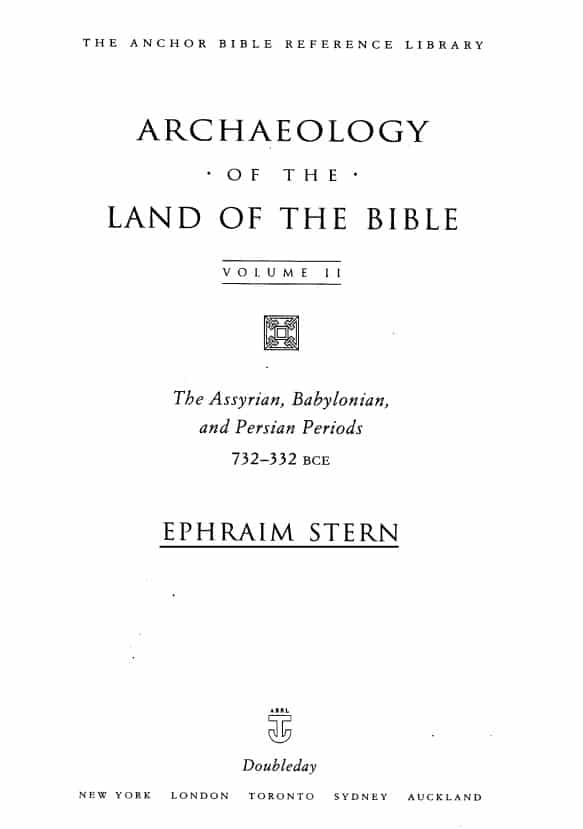
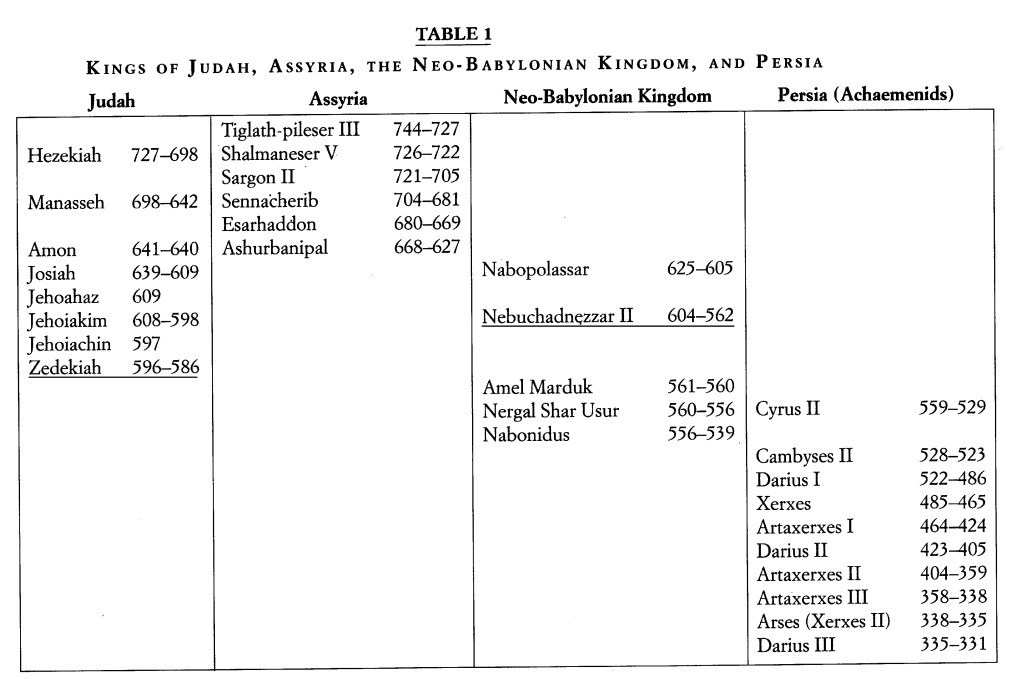
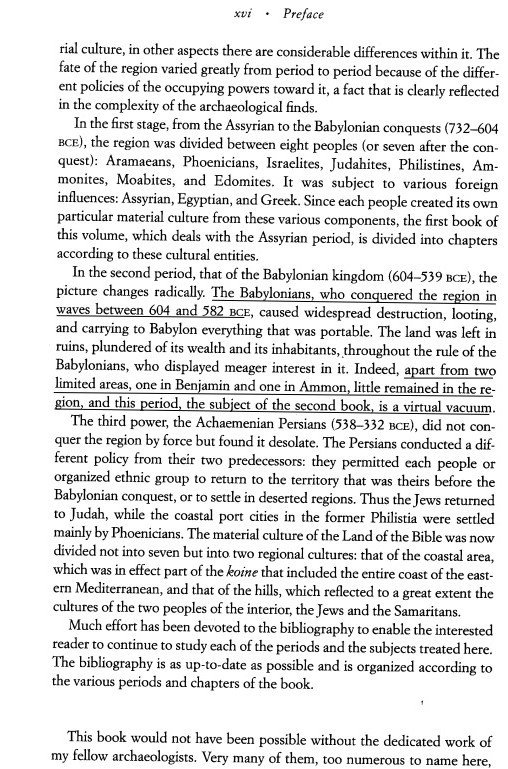
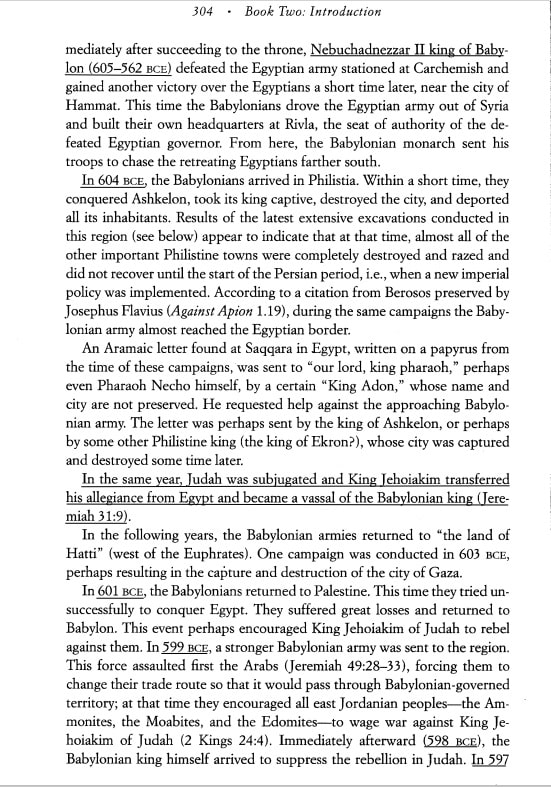
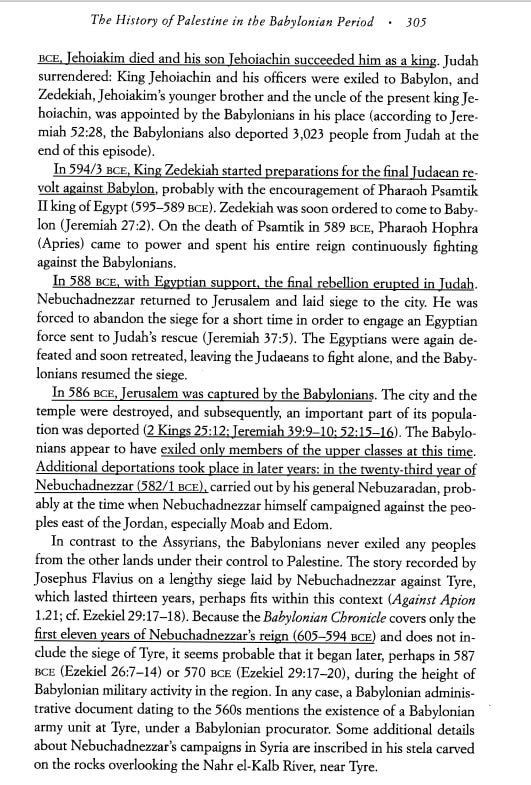
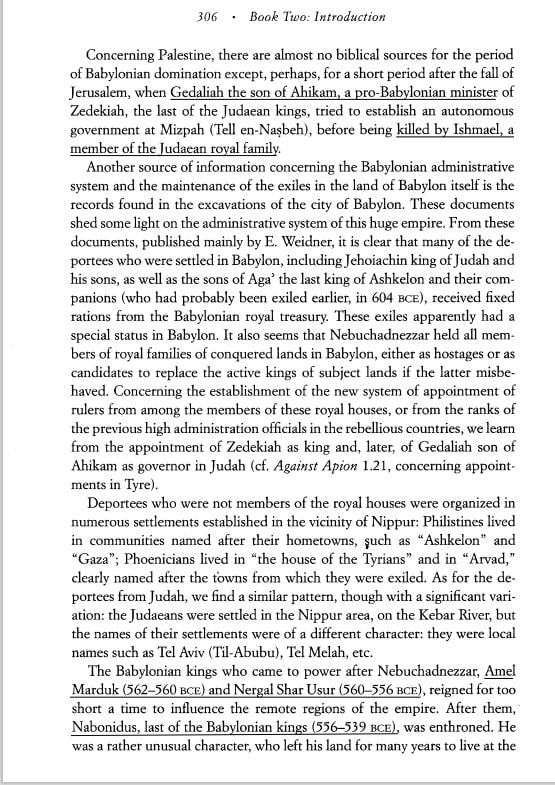
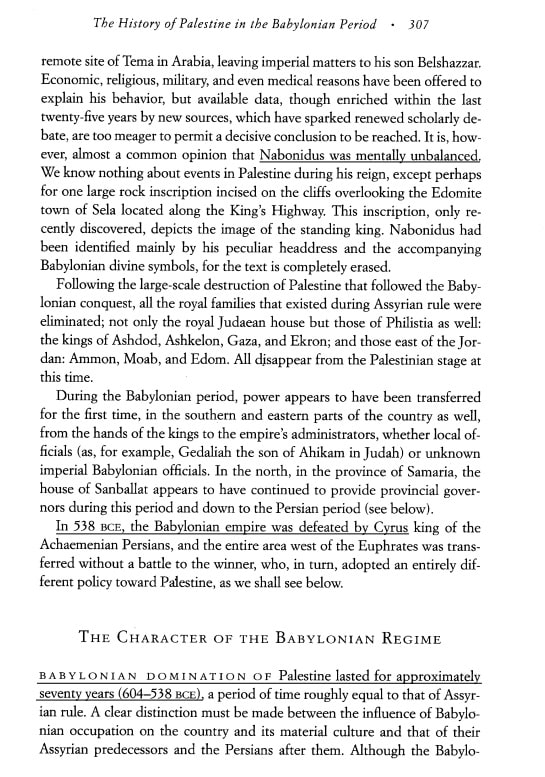
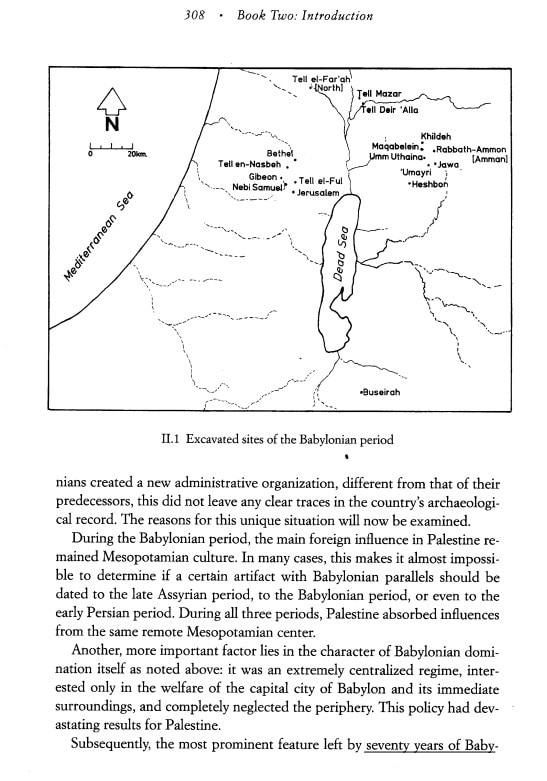
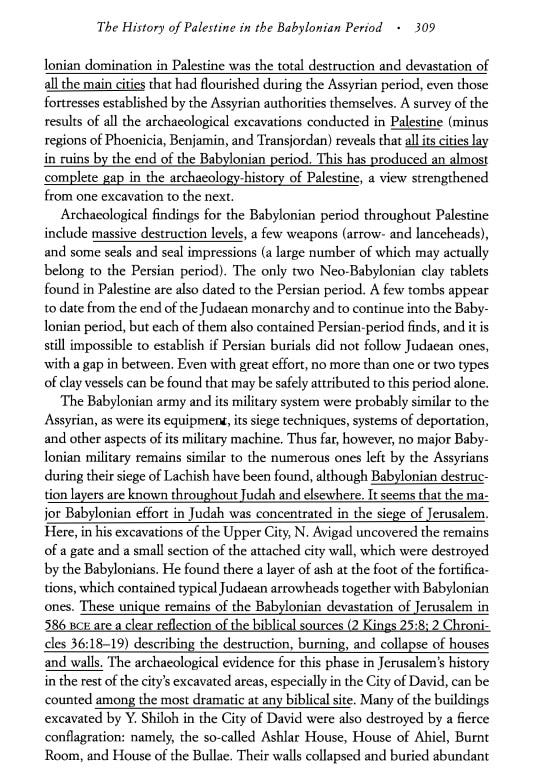
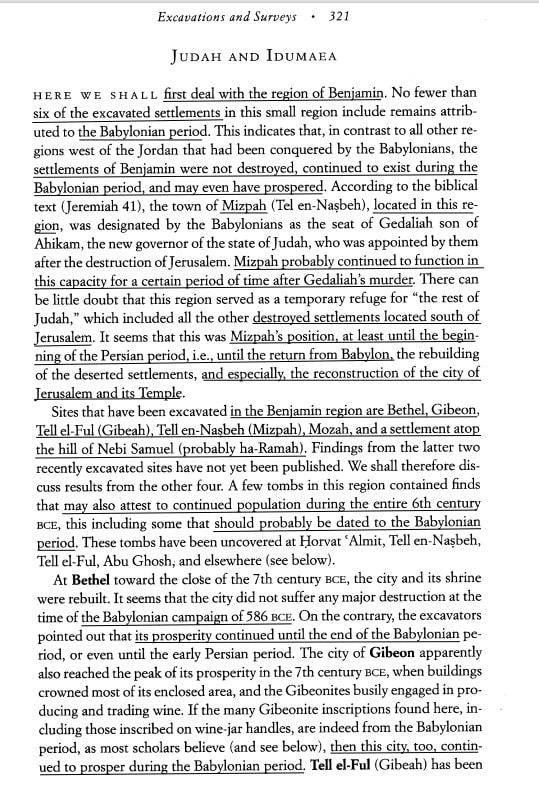
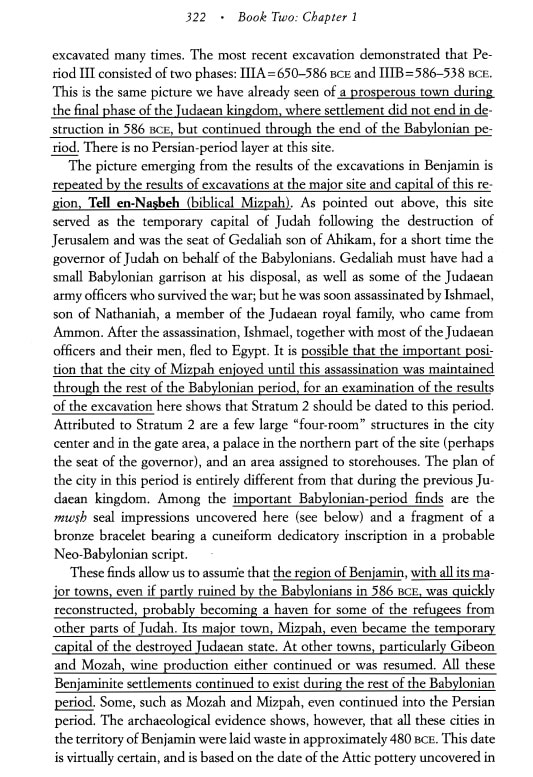
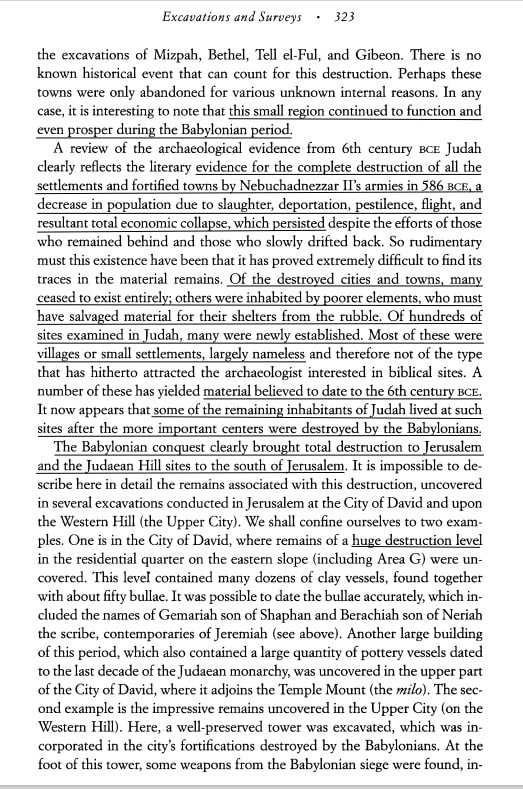
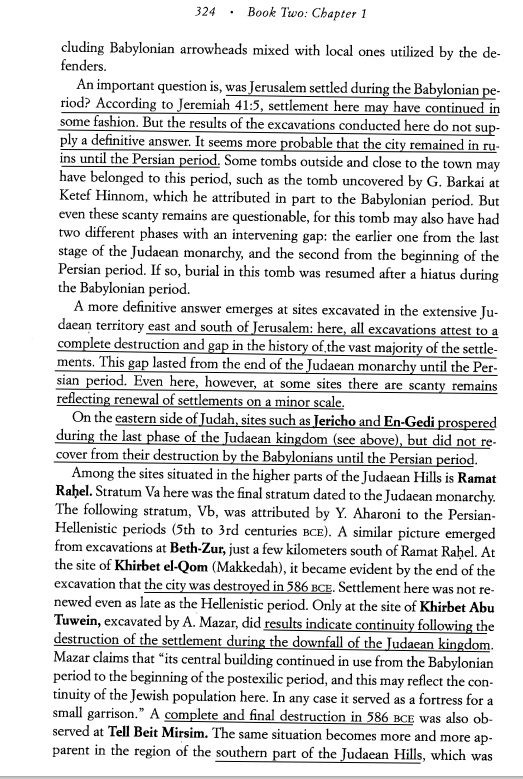
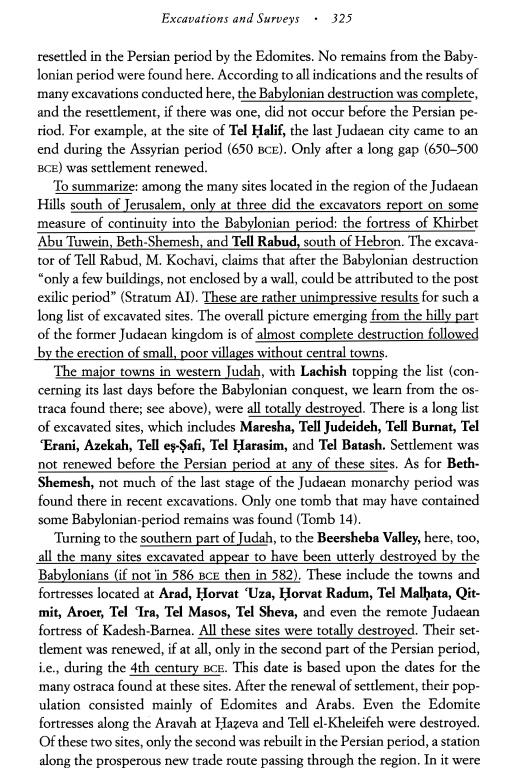
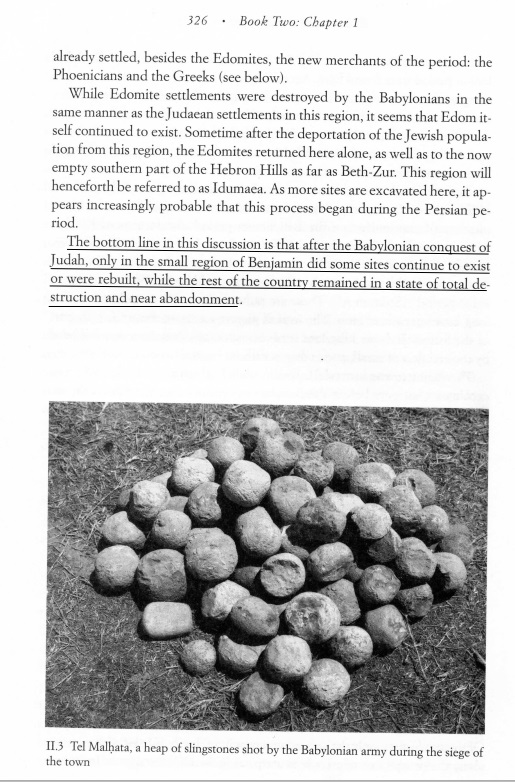
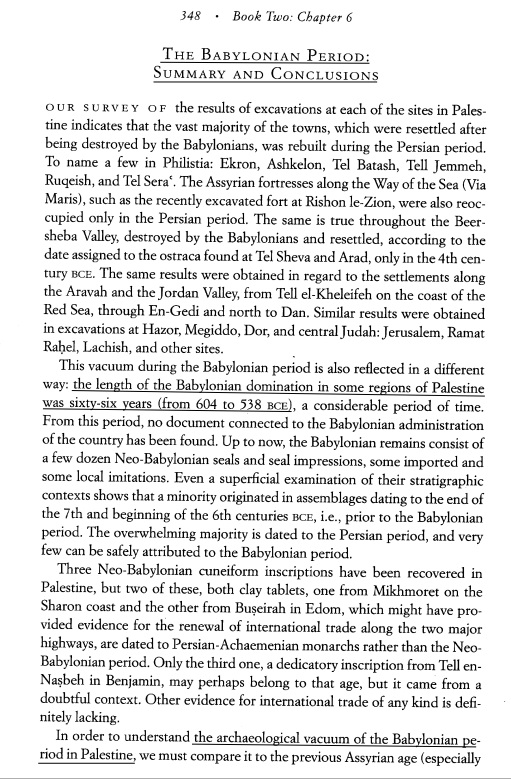
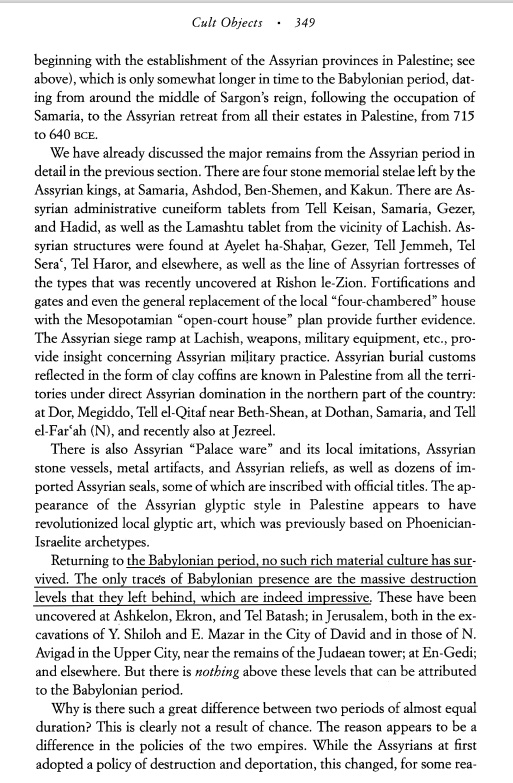
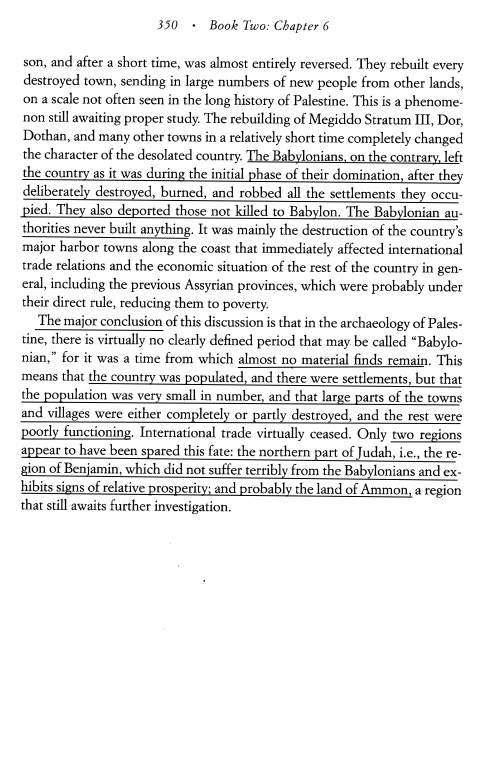
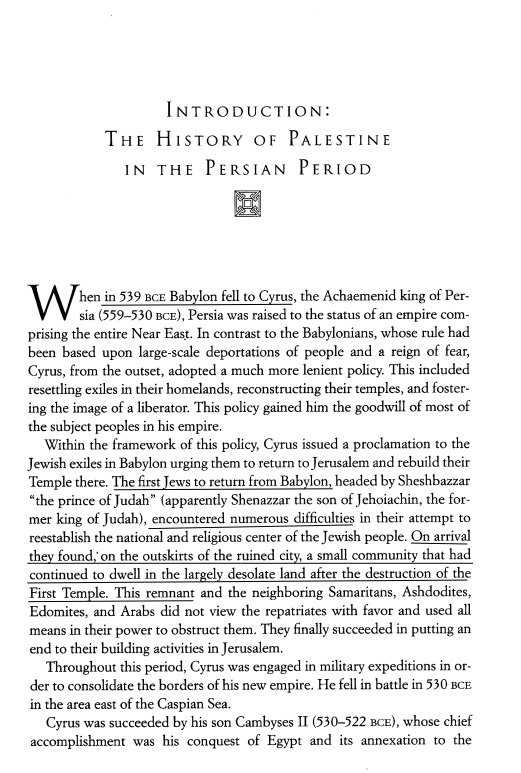
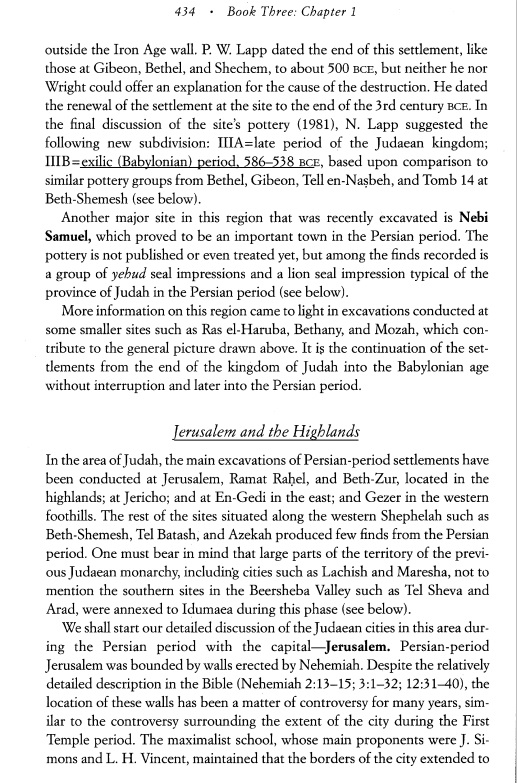
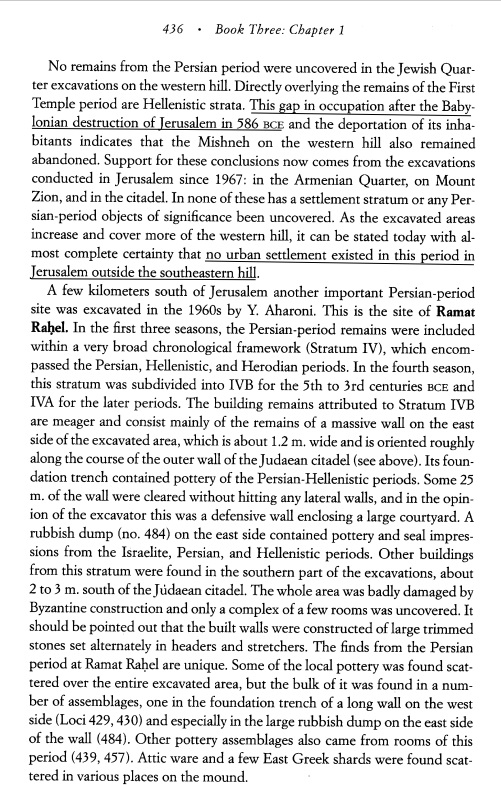
Imagem em destaque: A Queima de Jerusalém Pelo Exército de Nabucodonosor, 1630-1660, Juan de la Corte, óleo sobre tela, 66 x 112 cm.


